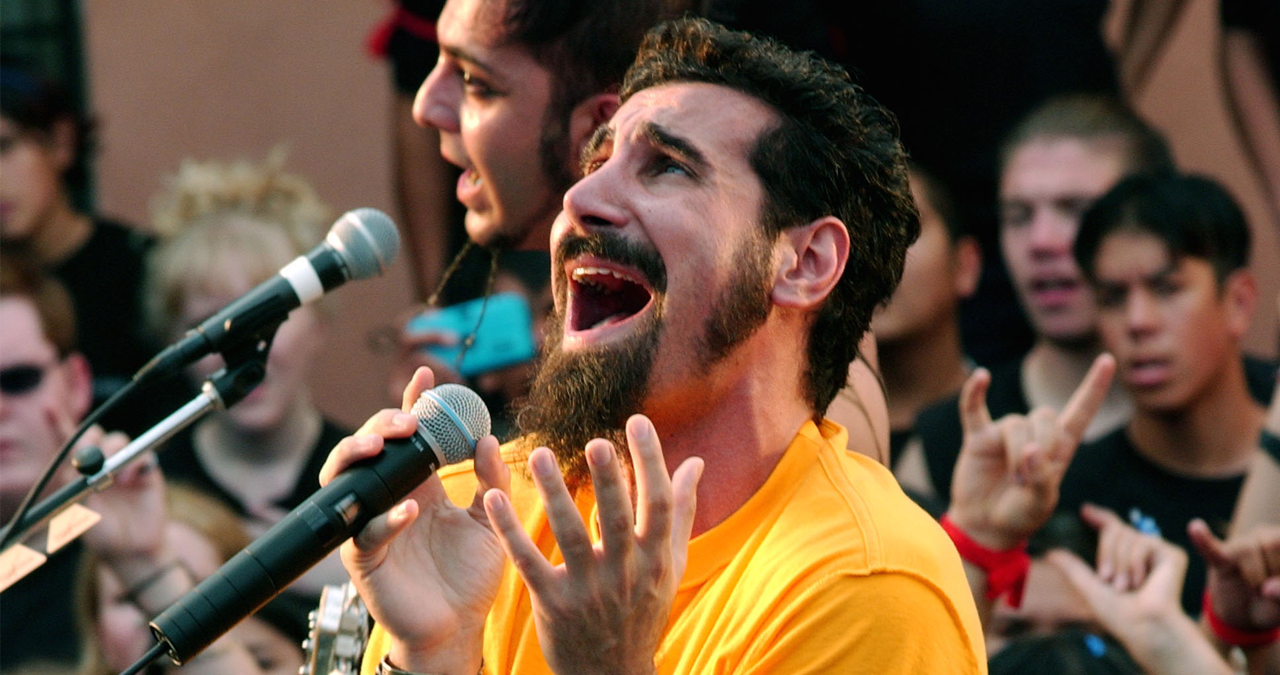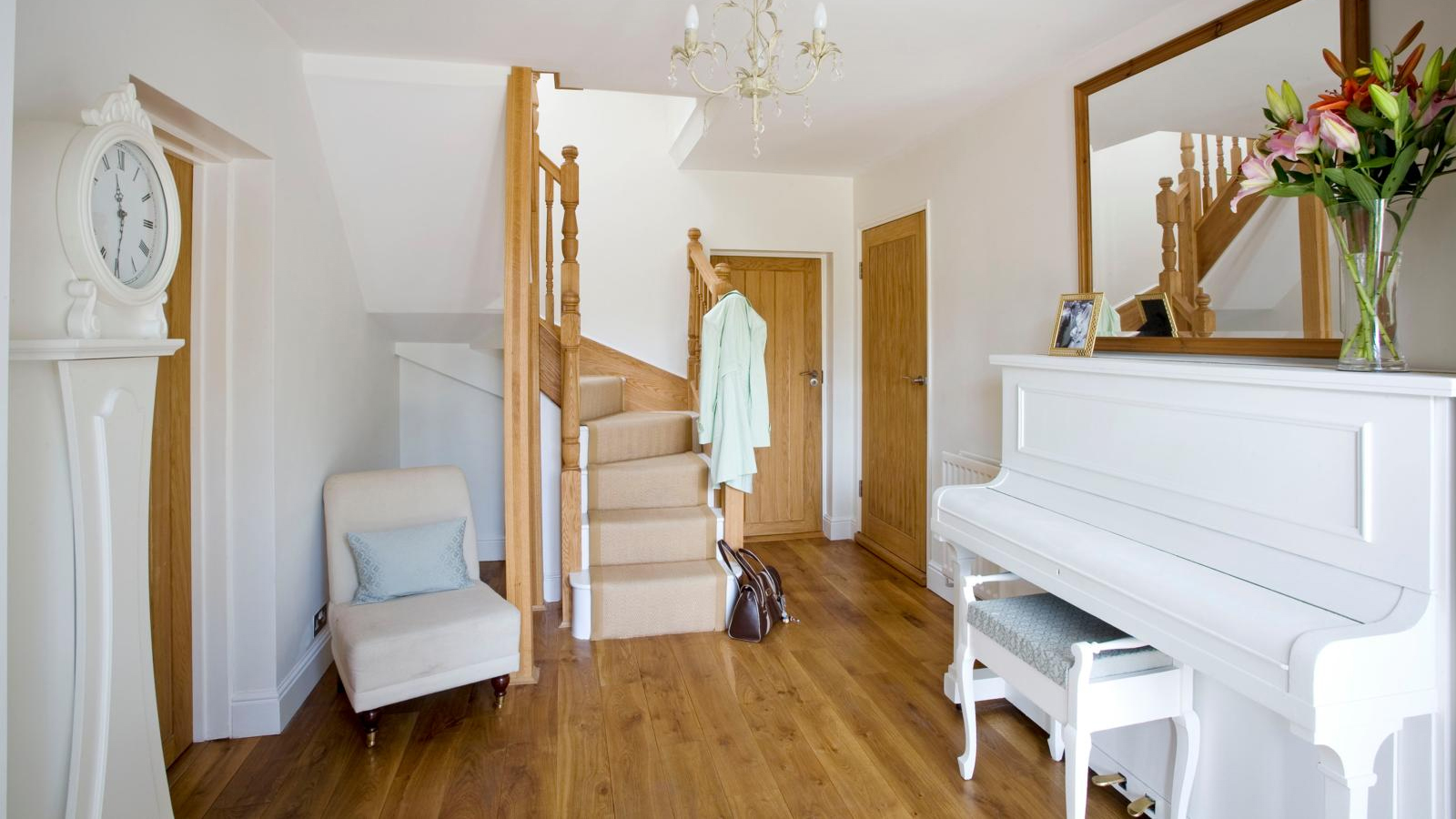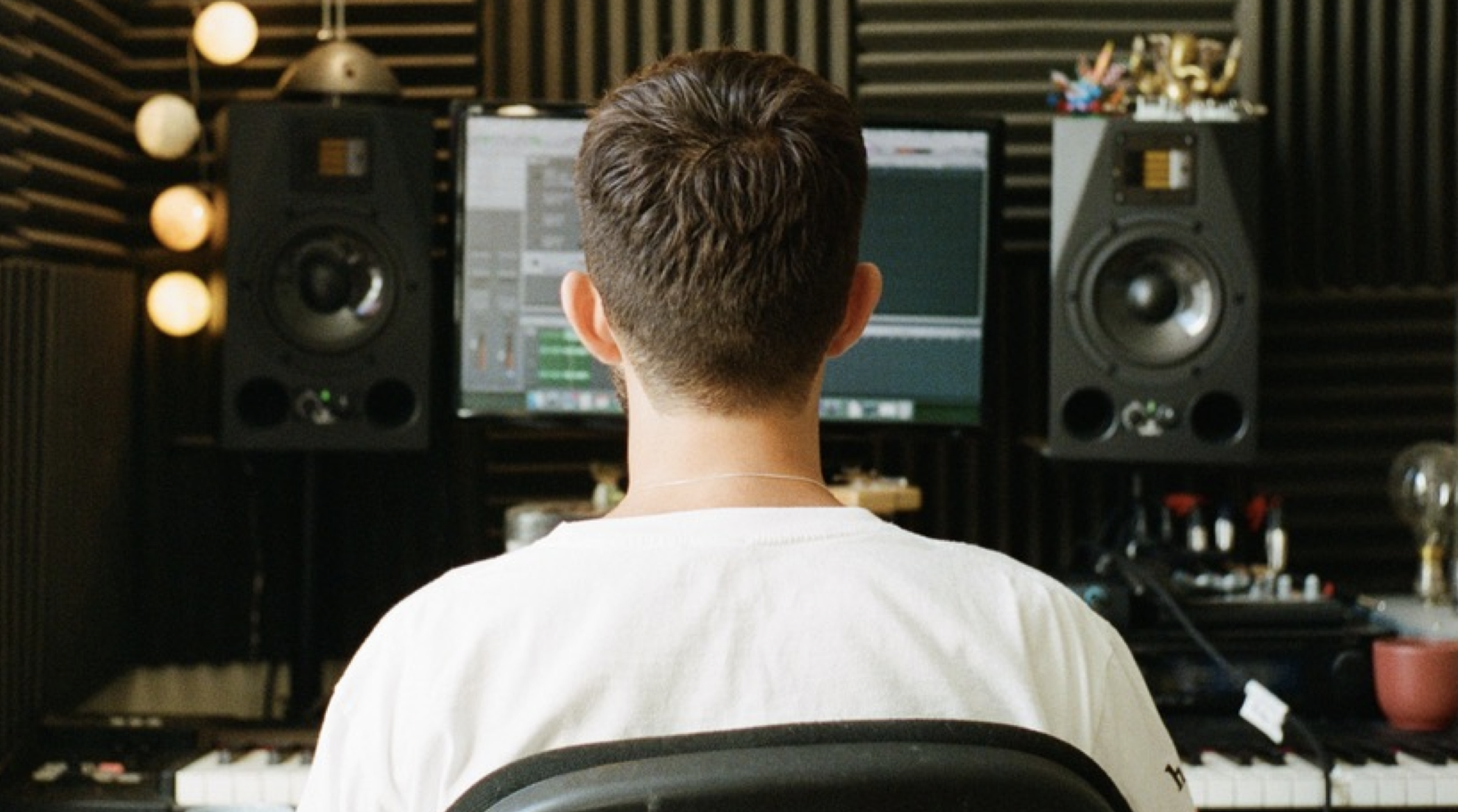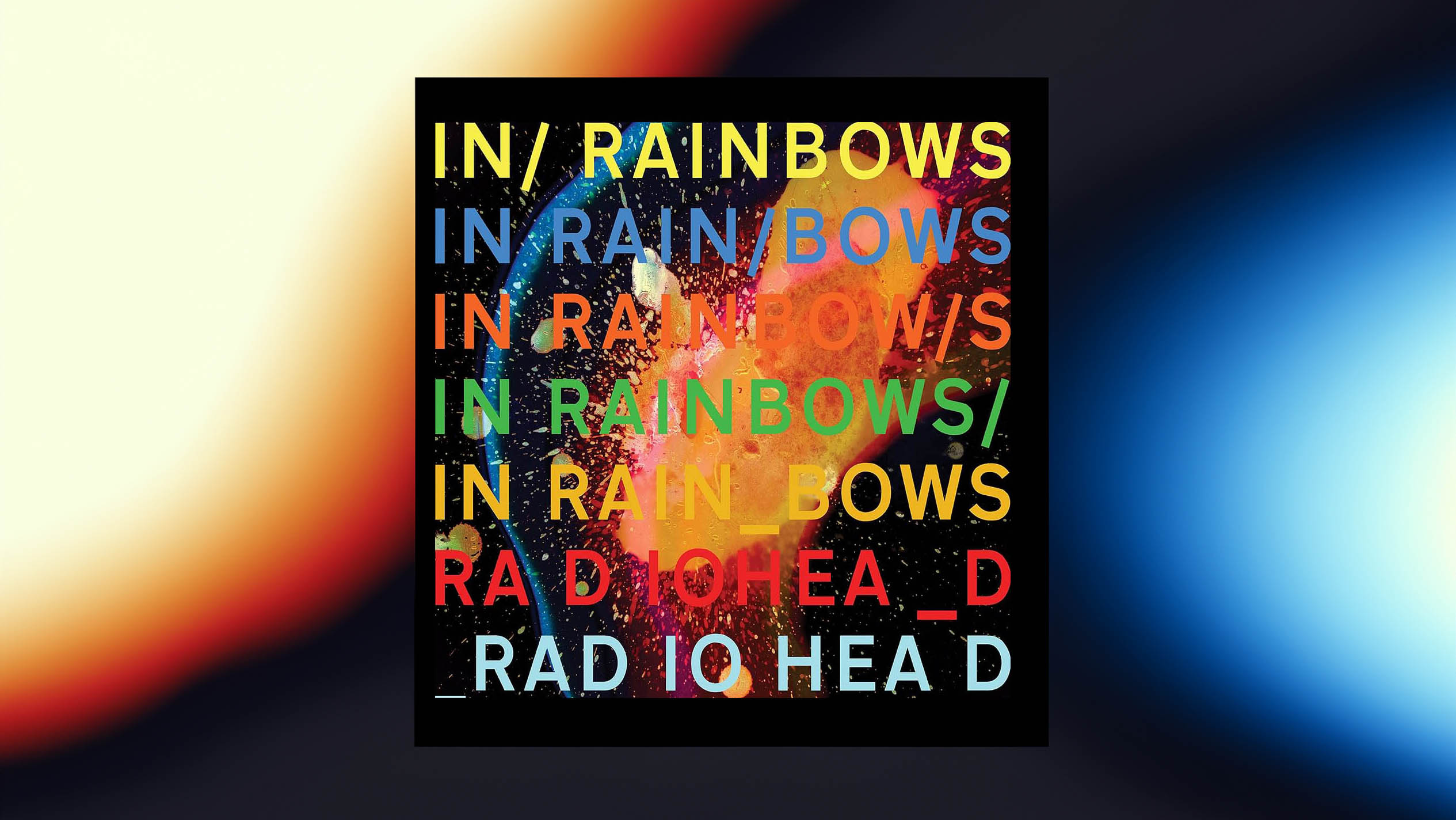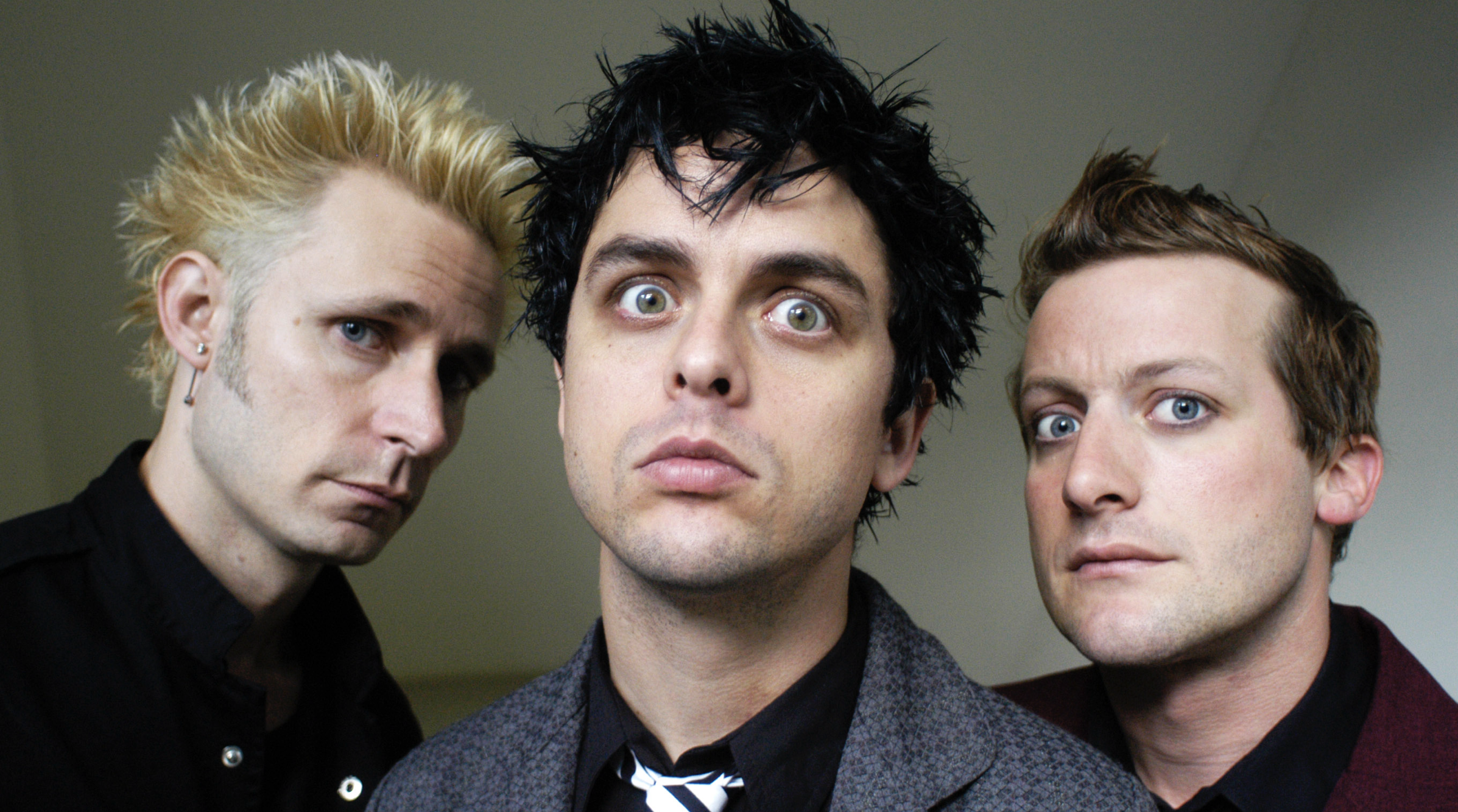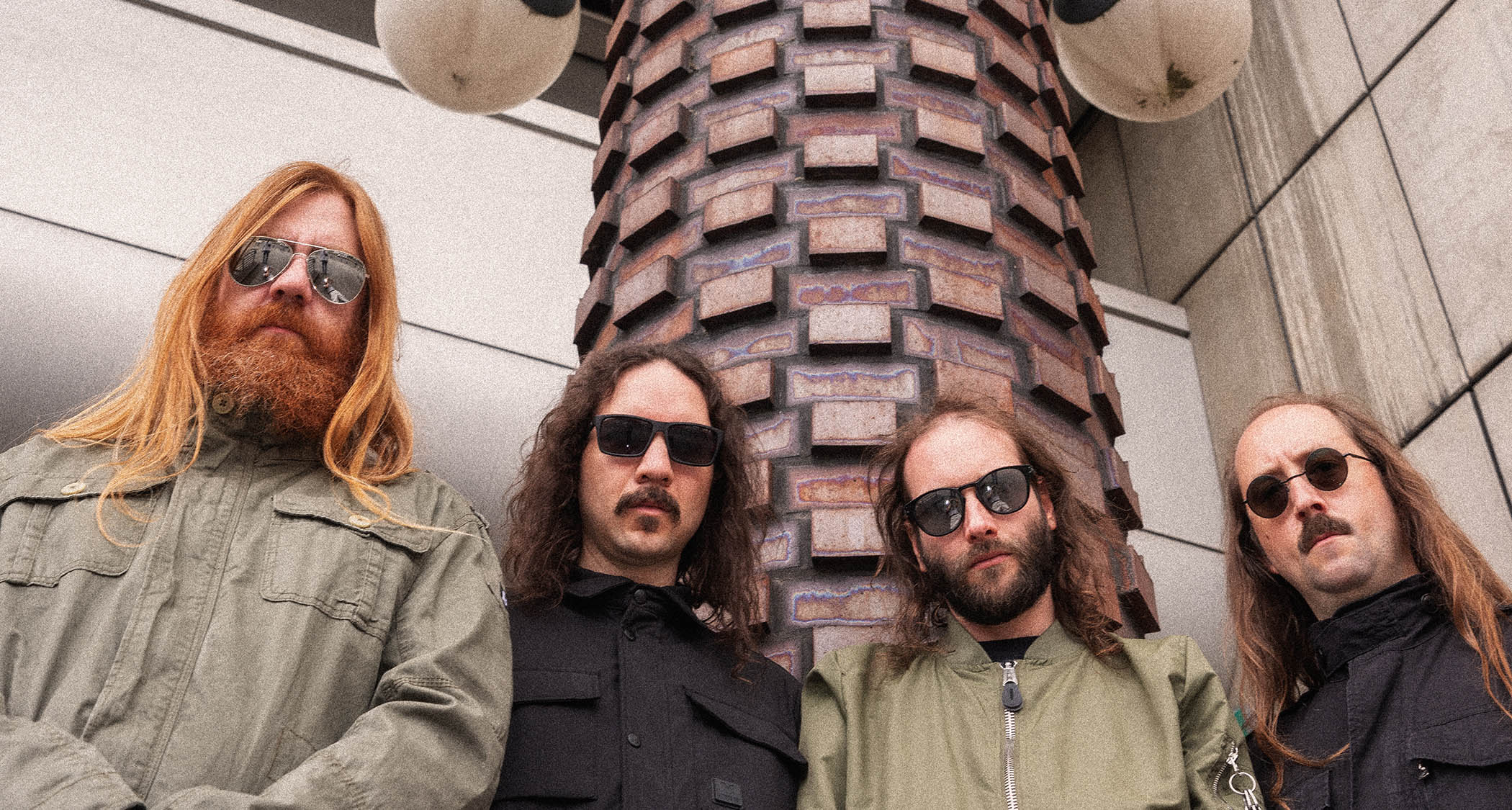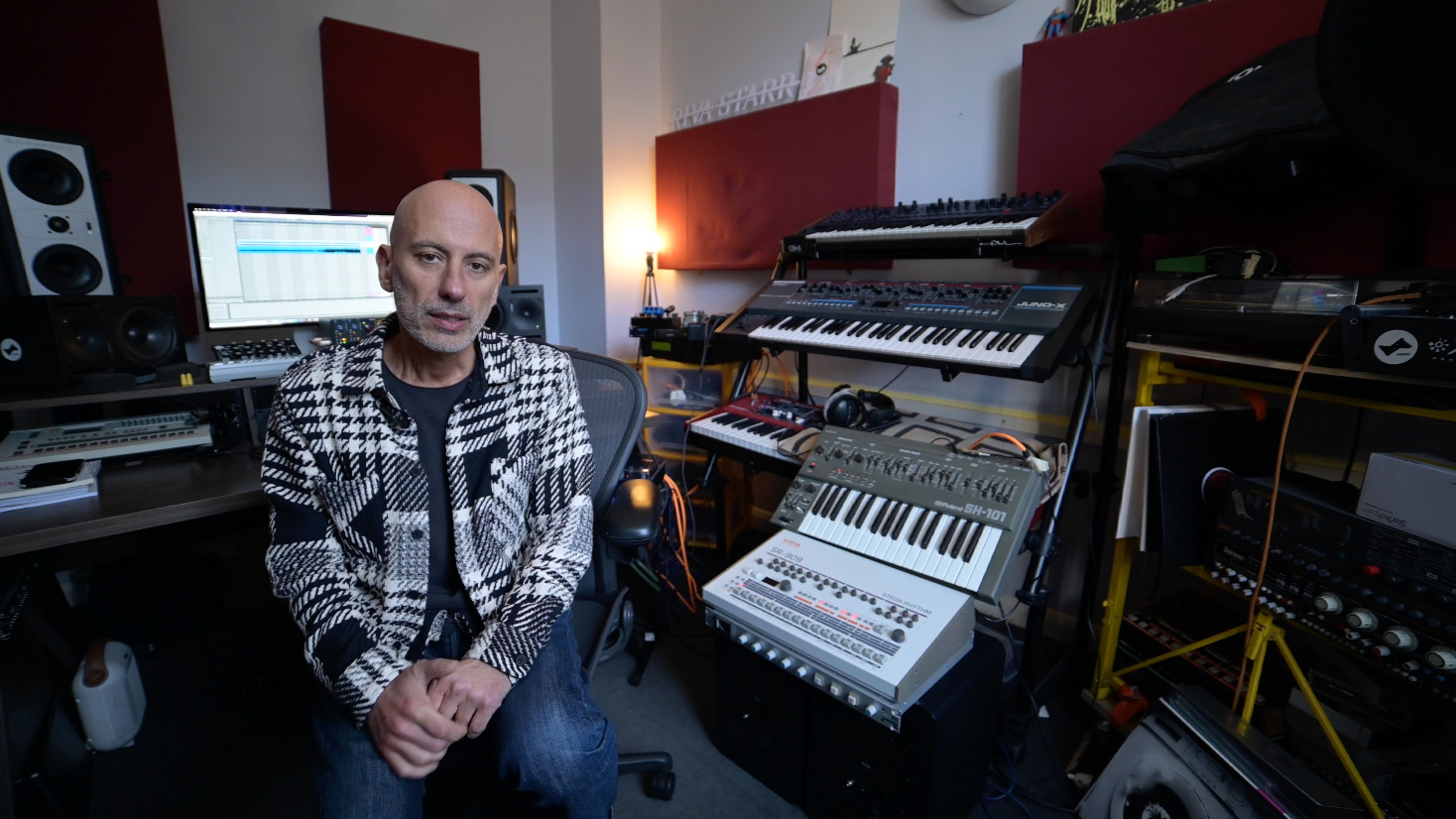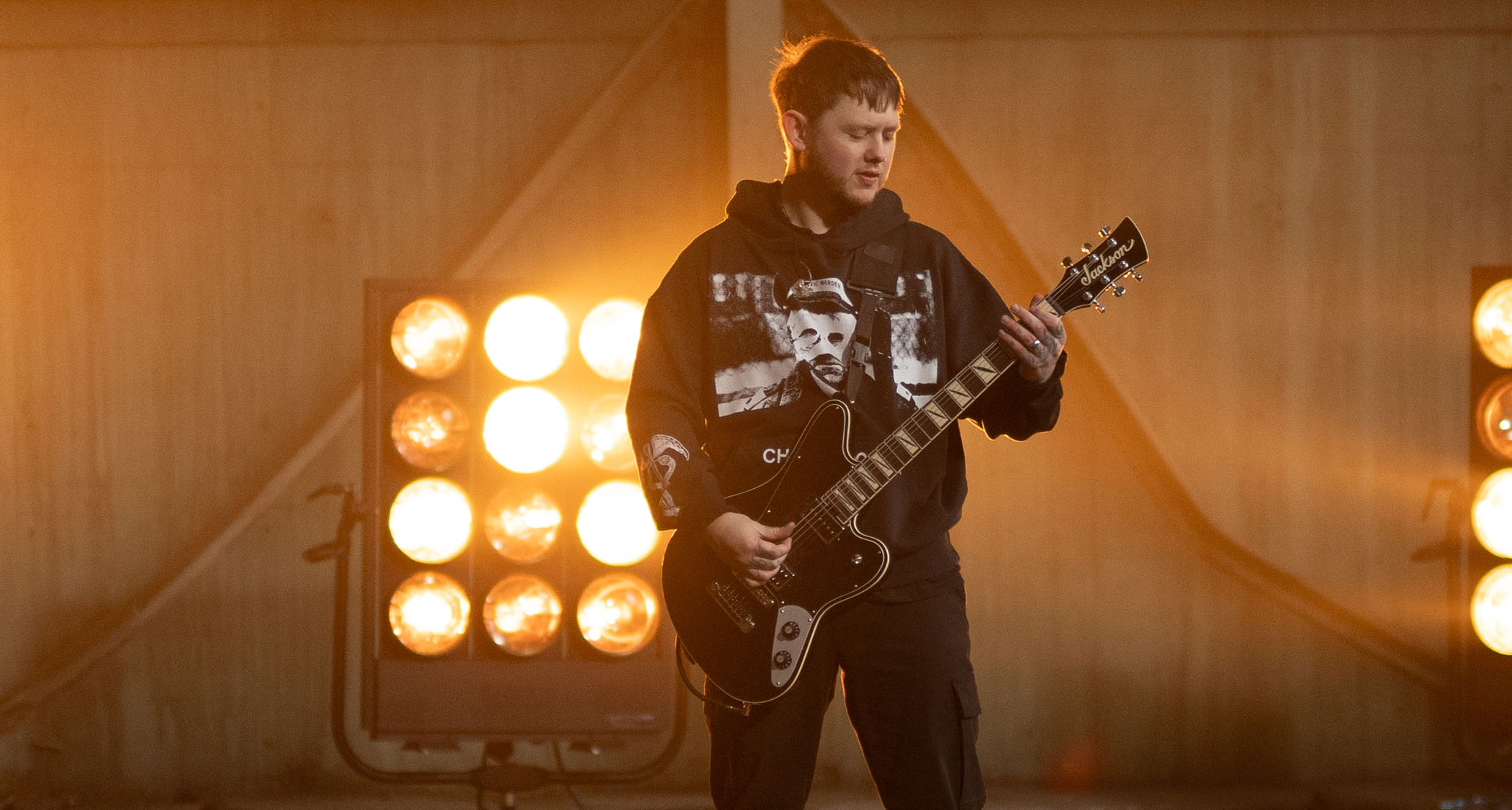“It’s like there’s another guitar player there - he’s just not actually there!”: How one metal guitarist sounds like two
The DIY approach of Within The Ruins axeman Joe Cocchi
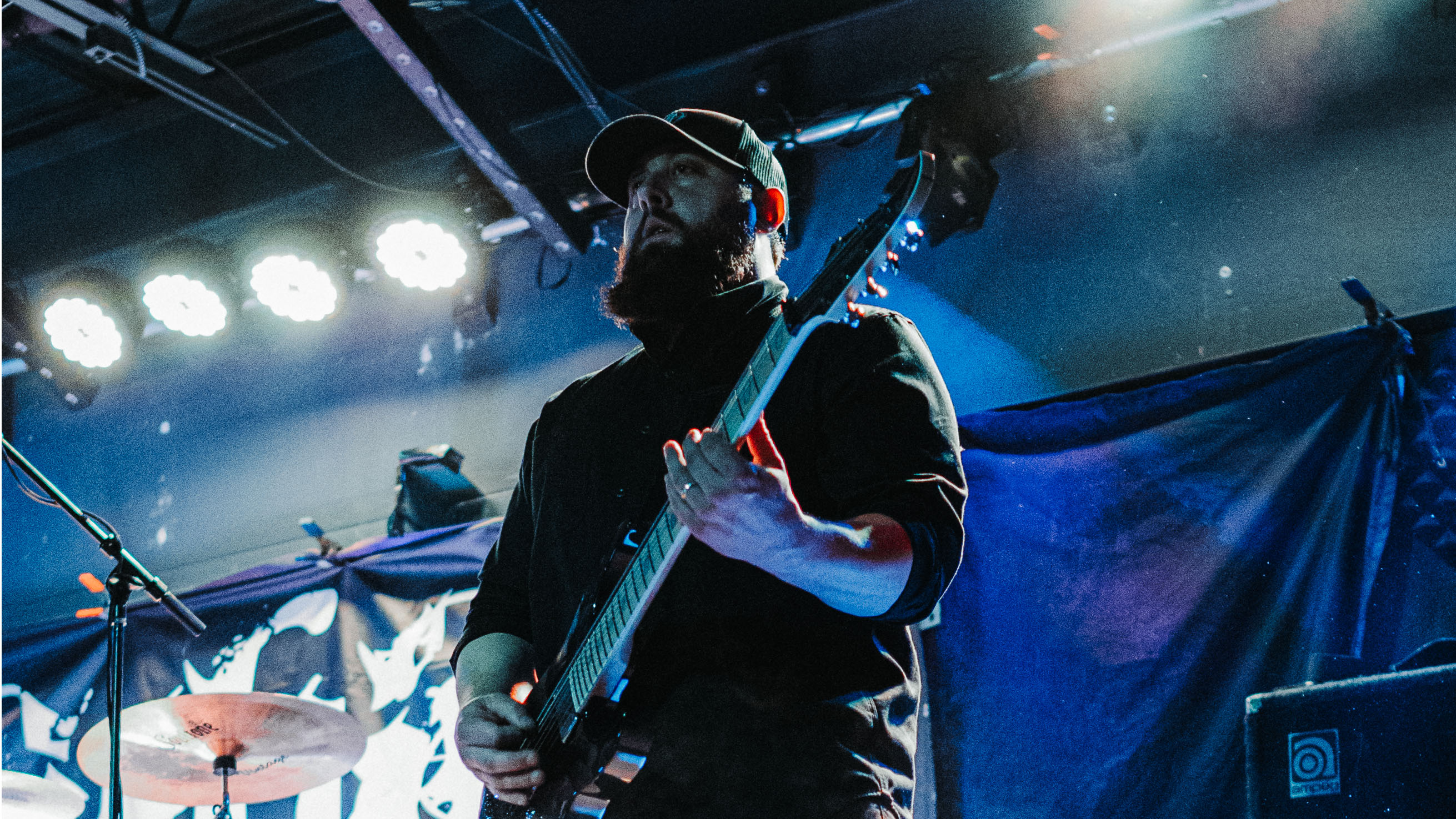
As the sole guitarist and creative force behind Massachusetts metalcore quartet Within The Ruins, Joe Cocchi has overseen the template behind their futuristic and dependably brutal wall of noise.
The band's current album Phenomena II combines their signature inferno of aggression with the kind of conceptual story arc you’d expect from a progressive metal band. And just like the rest of us, Cocchi’s approach to guitar has dramatically evolved over the years – to the point where his original guitar hero sounds nothing like the band he’s famous for playing in. As he goes on to explain, it all started with Ozzy Osbourne’s most celebrated guitarist, Randy Rhoads...
“Randy was huge for me when I started,” Joe says. “Even though he was only with Ozzy for a short time, there was something about his playing and the scales he stuck to. I was around 9 or 10 years old when I started listening to [Ozzy’s second album] Diary Of A Madman. It was probably a little dark for my age but it really connected with me. For years, that’s all I listened to. It was way above my capability at the time, but I did pick up a lot of the scales and patterns he was using. I had all the tab books and everything. A lot of that shit just stuck with me.”
After Randy, who did you turn to for inspiration?
“Metallica were also huge for me. I don’t think I would be playing guitar in a band if it wasn’t for them. I’m probably more influenced by James than Kirk. I was more of a rhythm guitar player until Within The Ruins got signed around 2010. I sucked at shredding... I still kinda do! I never aspired to be a shred guy like Steve Vai. Obviously James is more rhythmic in Metallica, though he does a little soloing, too. I like the feel and layering you can hear on albums like Master Of Puppets and the second half of ...And Justice For All. Some of those songs have crazy harmonies. That always stuck out to me, so I started doing my leads more in a rhythmic way than showing everyone how fast I can play arpeggios. I like music with more feel. It doesn’t need to be fast and crazy to sound impressive to me."
Are there any modern players who have shaped your sound?
“More recently, over the last 10 years, I’ve been really influenced by Arch Enemy. Michael Amott’s style is the direction I started going in. Again, he shreds but there are a lot of melodic parts that take you somewhere memorable. I love all his whammy stuff and bends. He’s a very unique guitar player. I listen to that band so much, and I’m always picking out stuff.”
Get the MusicRadar Newsletter
Want all the hottest music and gear news, reviews, deals, features and more, direct to your inbox? Sign up here.
Let’s talk about the rig. You use two heads – one for what you are playing live, and another for the second guitar and harmonies running out of a computer...
“There’s been many versions of it. Basically it started because we lost our second guitar player and we were on a tour. I got sick of dealing with people and just decided ‘F*ck it!’ At first it was a loop station, then I moved to re-amping. We have a laptop and all that shit, like most bands have now. My drummer plays to a click track and then we play to each other.
“Right now I’m running two Kemper heads. I play through one of them. If you think it’s as simple on the albums you’ll hear a right and left rhythm guitar, they’ll be generally the same except for the harmonies. I play the right side live and recorded another take of each song for the left side. It sounded more real than just taking the heavily edited stems from the albums.
“So that’s what gets re-amped: out through Pro Tools, into the other Kemper and running that through a cab. It’s genuinely like there’s another guitar player there... he’s just not actually there! That’s the basic idea.”
Are there any things you had to be careful with, just to keep more of a live band feel?
“If I’m playing a solo section, I’ll have the harmonies played on the other side plus some rhythm guitars super low in the mix. If you do that stuff so it’s barely there, it seems to fill everything in for live shows. People don’t suddenly notice six guitars that weren’t happening just before. I don’t want us to sound like a band with samples.
“We’re a live band playing our shit, but it’s better to fill things out. When there’s a solo section with no rhythm, a track can suddenly sound so weird and empty. We put a little bit in there just to thicken it all out above the bass.”
Do you have any pedals out in front of you or is the Kemper handling everything?
“Before I had the Kemper, I was doing this set up but with real amps. I would re-amp through the computer and use Mesa/Boogies or 5150s as my heads. I’d need a Noise Suppressor and Tube Screamer, and maybe a few other things, for our live shows. It ended up being a lot and nobody would help me with my shit. Then I went to Axe-Fx, which was cool, and then I switched over to Kemper which felt like better tones.
“All my effects are triggered by ProTools. I have a MIDI track that hits the Kemper and also changes the second head. It will change my delay and reverb or shape the tone with a filter to get rid of the highs and lows, providing a telephone kind of effect. Basically, I don’t have to worry about dancing around on stage. The only thing on the floor is my DigiTech Whammy, a wah pedal and a tuner.”
You’ve been using Caparison guitars for quite a while now. What kind of features help bring out the best in your playing?
“My journey with them started about 20 years ago when I bought my first two Caparisons. I moved over to some other companies just to experiment over the years and then I finally landed an artist deal with Caparison at NAMM. It was amazing they took me on because I’d bought those first guitars as a regular customer. They’re an amazing company who specialise in high-end guitars.
“Right now I’m using the newest Dellinger 2 with maple fretboards, in both six-string and seven-string forms. They’re amazing. I’ve always loved the company but when they started doing the maple boards on the Dellinger models, I was even more obsessed. I’ve always loved the sound of those. For my playing, they really pop and make everything brighter at lower tunings. Those are my two mains. I also have some of the TAT models. I have quite a few Caparisons, in total there are about six or seven Dellingers alone.”
The lead single from the new album, Castle In The Sky, has an elegant feel – it’s very modal, with some Yngwie Malmsteen-style harmonic minor ideas in places...
“Yeah, all of that harmonic minor stuff I do comes from that kind of style. It’s one of my go-to scales. I feel like I know a bit of music theory in my head, I just can’t put it into words because I didn’t study it. I just do it all by ear. I can hear it and I get it, I just can’t explain it. In that solo, there’s a significant change in terms of the root note. I started doing that because of The Black Dahlia Murder. I noticed on albums like Deflorate and Nocturnal, the solos would still be in the general feel of the song, but it would all elevate for the leads.
“Which I think takes everything to a different place for a minute. I love trying to do that kind of stuff in our songs, just to highlight the solo sections. You said the word elegant, and I think that’s a nice way to describe it. I wouldn’t say it’s flashy shred arpeggios with all the tapping. I prefer to write leads that are memorable. There’s a ton of delay on all the leads on this album. I like the H delay plug-in on Pro Tools with some other stuff in my crazy guitar bus.”
So what kind of practice regimes helped you improve as a player?
“I should probably say I’m the total opposite of a schooled musician. I learned on my own and it was quite a process. I can hear the progression from our first album, which came out in 2009, to what we’ve been doing now. Early on, I was writing stuff that was way above my capability. I was struggling to play shit live! I’ve never been a great guitar player because I never sat down to study technique or theory. I neglected a lot of that shit. There were a lot of bad habits that crept in.
“When we started to get more noticed as a band, I started to take it more seriously. I would sit down and focus on my right hand, working on my alternate picking by playing everything very slowly. I’d be trying to find the best way for each riff of lick, because less movement can make things easier, but then alternate picking sounds different to down picking. Being more efficient ultimately means less work!”
Does that mean playing the older material is less challenging than when you recorded it?
“Yeah! When we’re hitting the road, I have to go back and relearn some of our songs because we have a lot of stuff now. So I’ll be relearning parts and remember how tough it used to feel. Ever since I started slowing everything down and really working on it, it’s all been a lot easier. You need to focus and formulate a strategy to break out of the bad habits.
“Paying attention to what you’re doing physically can be a bit of a mindf*ck, because you’ll see and hear things you’ve never really thought about before. I’ve never been one to sit down and practise all day. I have friends who were doing five hours a day, I’ve never been like that. It’s just not fun for me.”
You’ve produced the last few records. What kind of tips can you give us for high gain engineering and mixing – are there any settings or tricks that you couldn’t live without?
“I haven’t played through a real amp in a while, but putting a Tube Screamer in front is very important for my sound, just to get that extra warmth and drive, but not to the point where it’s fizzy. A lot of the sound comes from your guitar, the tuning, the strings and your hands. I’ve let other people play through my rig and they sounded nothing like Within The Ruins. I’ve always recorded with a maple fretboard. I also prefer steel wound strings instead of nickel. That’s another important thing for punch and snap at lower tunings.
“I’ve been using Fishman pickups, but I love EMG too, I’m not exclusive with either. Active pickups are important for my tone. I’ve tracked the last few albums just myself, though I have to say I learned a lot from Josh Wickman who was our producer early on. He still masters our albums, but I learned about recording good guitar tones from working with him. That guy really helped us find our sound.”
What’s the most valuable thing you learned from him?
“Tracking an album is way different to playing live. Some people forget that. There’s a lot more going on when it comes to making an album. It’s not just a case of buying the right 5150 head and EVH guitar to sound like Van Halen, right? Even though it hasn’t been updated in a long time, I still use Pod Farm sometimes, just for a specific sound.
“And I will also use Neural DSP plug-ins as well. I usually keep the bass at four, the mids around two and treble at six. The resonance and presence knobs can be very different on each amp, but it can really open up the overall sound. There’s always a sweet spot with those controls. You just need to experiment.”
Amit has been writing for titles like Total Guitar, MusicRadar and Guitar World for over a decade and counts Richie Kotzen, Guthrie Govan and Jeff Beck among his primary influences. He's interviewed everyone from Ozzy Osbourne and Lemmy to Slash and Jimmy Page, and once even traded solos with a member of Slayer on a track released internationally. As a session guitarist, he's played alongside members of Judas Priest and Uriah Heep in London ensemble Metalworks, as well as handling lead guitars for legends like Glen Matlock (Sex Pistols, The Faces) and Stu Hamm (Steve Vai, Joe Satriani, G3).
“The most musical, unique and dynamic distortion effects I’ve ever used”: Linkin Park reveal the secret weapon behind their From Zero guitar tone – and it was designed by former Poison guitarist Blues Saraceno’s dad
Carlos Santana collapses and then cancels second show “out of an abundance of caution”



